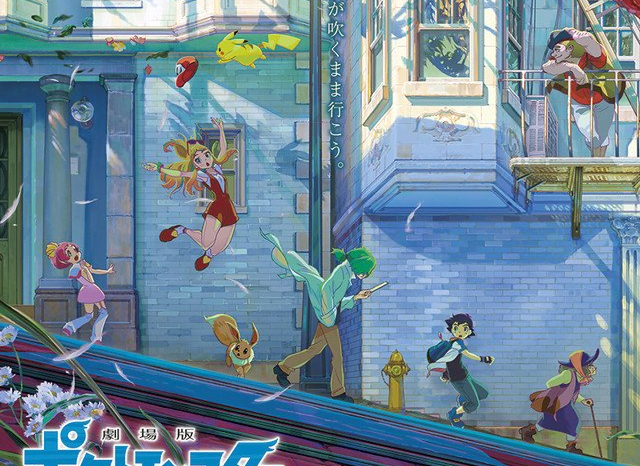The Power of Us Movie Review
The Power of Us was a fantastic watch, and possibly the best Pokémon movie to date.
When I watch Pokémon movies, I don’t really expect a lot. The characters, conflicts, and story arcs can feel underdeveloped, so most of my enjoyment comes from simply being a Pokémon fan. Minor shining moments, bias in favor of the featured characters, and, in the case of the older movies, even a bit of nostalgia, allow me to keep watching and have an experience that’s enjoyable enough. And because I don’t expect the most amazing narrative quality out of these movies, I always judge them against themselves: “It was really good for a Pokémon movie.” As such, Pokémon the Movie: The Power of Us delivered a pleasant surprise: it was a good movie in its own right, and one of the best, if not the best, Pokémon movie to date.
Right away, I love that the English title, The Power of Us, combines the Japanese title, Everyone’s Story, with a callback to the second movie’s title, The Power of One, which also features a Lugia. It’s a fun name that conveys the theme of the story succinctly, while offering a little extra referential treat to viewers who have stuck around since 2000.

The Power of Us takes place in Fula City during their yearly Wind Festival in honor of the legendary Pokémon, Lugia. Fula City was an uninhabitable wasteland until Lugia one day appeared and bestowed wind upon the settlers, giving them a usable energy source. The festival is a time of celebration and to ask Lugia for a renewed wind source for the year. The locales are all very pretty, and the wind theme is utilized well, with lots of use of movement throughout town. There are a wide variety of locations within the city and its surrounding forest, but they all feel cohesive and are overall a visual treat. One final note on the topic of appearance is the style overall. The art style utilized by the “new continuity” movies—last year’s I Choose You! and now The Power of Us—is a pleasant middle-ground between the classic anime visuals and the newest goofy style seen in Pokémon the Series: Sun & Moon. For viewers who wish the animation was just a bit more stylized without being as over-the-top as the recent animated series, the newest movies are sure to please.
The Power of Us centers on six primary characters who, despite their shortcomings, each have strengths which are realized through working together and with Pokémon. With such a large cast, it’s natural to feel wary—there’s only so much time a movie can run for, inherently limiting each character’s potential story arcs. But The Power of Us manages to give each and every one their time in the spotlight and the opportunity to grow, a very impressive feat in this situation.
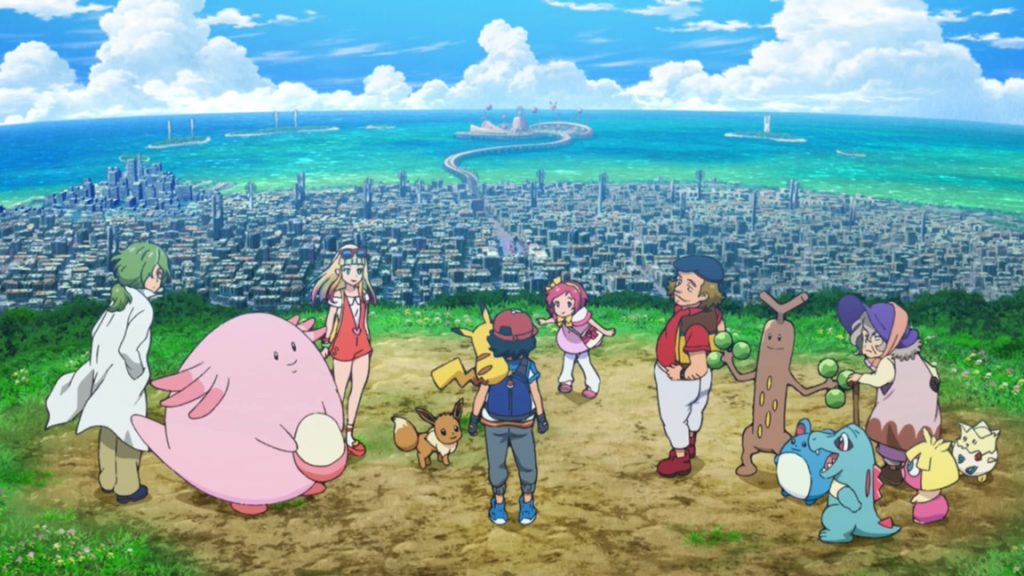
The first characters you’re introduced to are Risa and her brother, Rick. Rick is bedridden and asks Risa to catch a Pokémon for him, but it’s actually a ploy to get her self-esteem back up. Risa used to be a championship runner until a leg injury traumatized her and claimed most of her courage. I love how “real” Risa feels. From her makeup and nails—she even pencils in her eyebrows!—to looking up basic Pokémon information on her smartphone, she behaves much like a real person in the real world. Even her ex-hobby, of which she was good enough to make into a career, had nothing to do with Pokémon. Amidst all the series’s Pokémon professors and trainers, it’s really refreshing to see a character who feels like an average person who just happens to live in a world filled with Pokémon. And she isn’t cast as an “obligatory love interest,” either. She’s her own character, and right away you’ll want her to gain back her confidence to run, and her confidence in herself.
Next you meet Callahan, a loud-mouthed liar showing his sister and niece around Fula City for the festival. He exaggerates and flat-out makes up stories to impress his sickly niece and make her happy. Naturally, his lies catch up to him, causing trouble for everyone and spurring his growth. While normally it’s very easy to dislike such a character, Callahan’s motivations for his behavior make him quite sympathetic; you can’t help but want things to work out for him. He earns an especially touching moment that nearly had me in tears in the movie theater.
Around town is a little old lady who covers one hand with a thick glove even in the middle of summer and seems to hate Pokémon. You later find out her name is Harriet, and there’s more to her than meets the eye. She gets involved in the group’s antics when she accidentally gets covered in a Sweet Scent formula at the Pokémon lab, causing a horde of Pokémon to follow her around. Harriet’s backstory is handled the fastest of the bunch, but seeing her slowly warm up to the people and Pokémon around her offers satisfaction to her story arc. She provides the added bonus of effectively acting as the group’s straightman and giving advice to the younger characters, making her a great addition to the roster. Her shining moments are towards the end of the film, but she’s lovable the whole way through.
Toren is a Pokémon researcher. His intelligence and love for Pokémon are unmatched, as is his fear of interacting with people. Callahan requests his help for a Pokémon catching contest, inadvertently dragging him into our main-character crew. His research is at the root of the disaster that will plague Fula City, meaning Toren will get to put his knowledge to practical use while learning to confront others and speak up for himself. The juxtaposition between his reaction to being within even the slightest proximity of people against his caring nature towards Pokémon is nothing short of adorable. His nervousness was handled believably, and he ended up being my favorite character; I loved seeing him overcome his personal challenges while still being an active help to the others.
Margo is the daughter of Fula City’s mayor. She is adventurous and caring, and seems to know more about the city’s secrets than most know there are secrets of. Her kindness touches the heart of Zeraora, who otherwise despises humans. Certainly the least dynamic of the new cast, Margo still offers relevance by connecting with Zeraora and getting her father to divulge the truth behind a disastrous fire from 50 years ago. She also shows great courage multiple times throughout the movie, making her likable despite her simplicity.
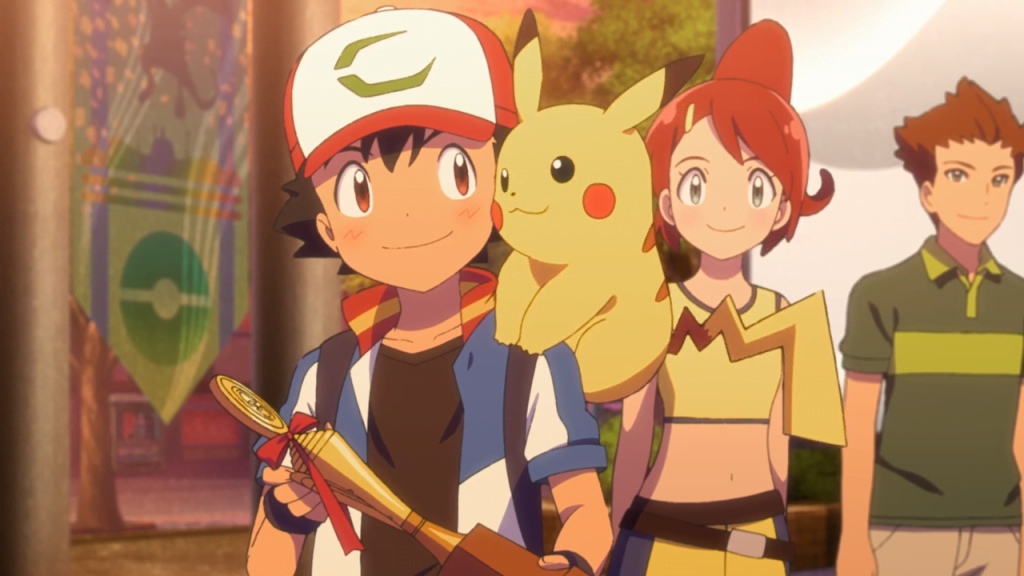
Last but certainly not least is our familiar face, Ash Ketchum. Unaccompanied by any travel partners, he is visiting Fula City for the Wind Festival. Very uniquely, Ash for the most part takes to the backseat, allowing the new characters the chance to carry the torch. When Ash does get involved, he surprisingly acts as a mentor to the others, unlocking their true potential and bringing them together with “Pokémon power.” This wise mentality from Ash is a fantastic, refreshing change from his ineptitude that is all too common in the animated series. For the first time in a very long while, I wasn’t tired of Ash and wishing he would be replaced by literally anyone else. Not once did I feel Ash was detracting from the movie in any way, but rather I was pleased with what he was adding to it.
Also joining us from the animated series is the iconic Team Rocket trio. While not incredibly major, their actions are the catalyst for the primary conflict within the story. They are, as usual, amusing, but even better is how they get the story rolling. They are only indirectly responsible for the big disaster near the end, which is a nice change of pace from many previous movies with a clear-cut Saturday morning cartoon-style villain, but moreso than that, it means all of the main characters are likable. There are some minor, nameless poachers, but they are quickly dealt with during the story. You certainly don’t want Team Rocket to succeed at stealing the lab’s experiments, but they’re still the lovable Team Rocket we know from the show, and for people who will be entering the world of Pokémon for the first time through this movie, they are still very clearly meant to be more comedic than evil.
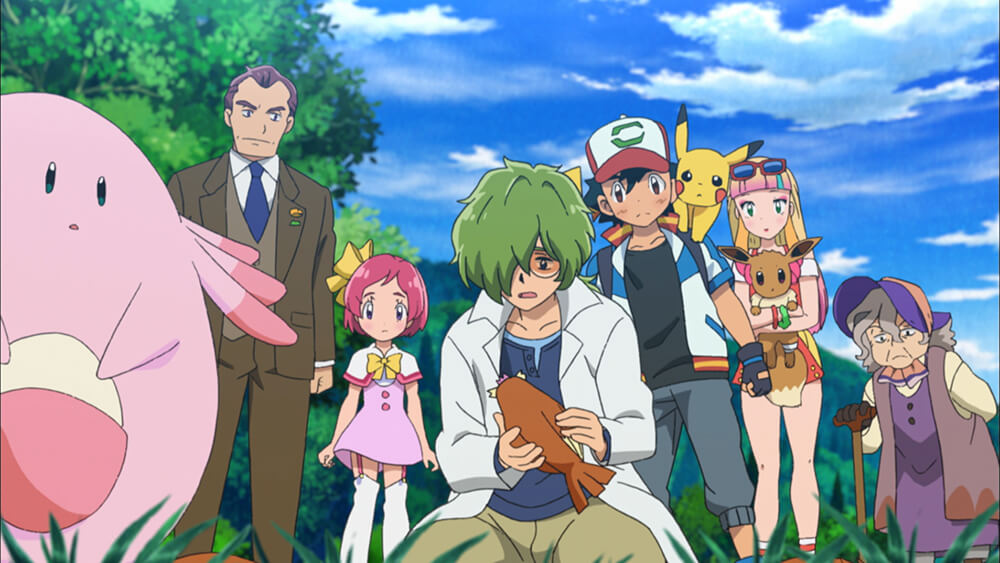
In addition to their unique quirks and developed story arcs, our heroes truly embody the idea of a “colorful cast.” Unkempt hair; burly; made-up; young child; old grandma—each character has a unique and fun visual design to compliment their personality. This makes each one even more memorable and makes watching them do even the mundane a joy.
Of course, you can’t have a Pokémon movie without some Pokémon. Like Ash, anime staple and franchise mascot Pikachu takes a more supportive role this time around, while still helping at all the right moments to maintain relevance. And don’t worry—it doesn’t talk this time.
The Pokémon Rick asks Risa to catch is an Eevee, and Risa finds a rather sassy one. But its tenacity touches her and the two empower each other. Likewise, Callahan finds a Sudowoodo during the Pokémon catching contest and is annoyed at how similar it is to himself—but while Callahan doesn’t want its company, the Sudowoodo is moved by his words to “stop pretending to be something you’re not” and tries to stay with him.
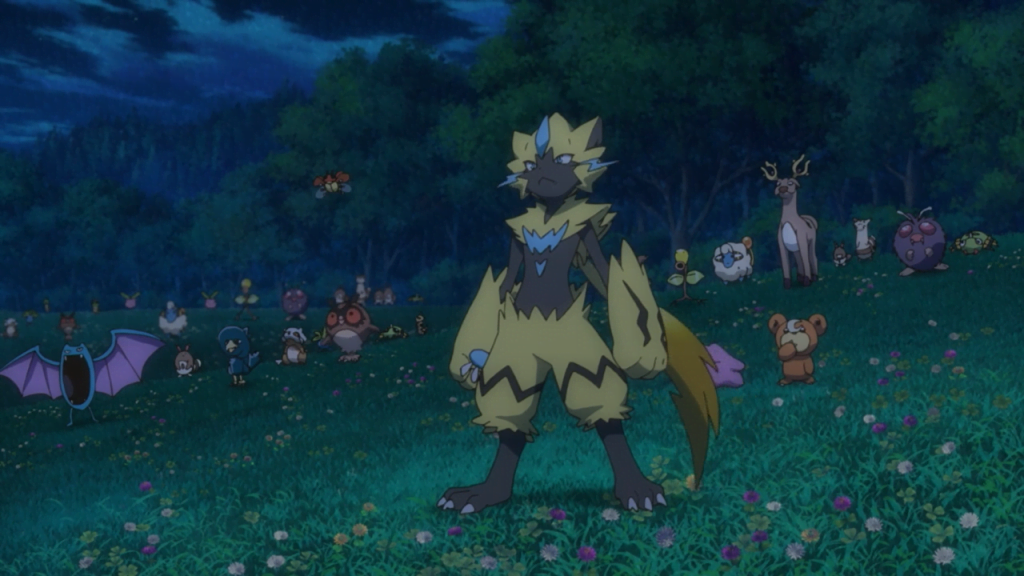
The Pokémon at the forefront of The Power of Us is actually not the fabled Lugia, but the new-even-by-Gen-VII-standards Zeraora. It lives in the forest surrounding Fula City and harbors a hatred for humans that the cast wants to help it overcome. The primary reason why I love Zeraora is because it doesn’t talk. Instead of relying on telepathy or whatever magic mumbo-jumbo the majority of past movies utilized to make the main Pokémon able to communicate with the human cast, Zeraora instead growls and snarls and roars, but you can still tell exactly how it’s feeling through its actions and reactions. Never once did I wish Zeraora could speak in order to clear up some misunderstanding or to move the plot along–it wasn’t necessary at all. And its successful performance here made my opinion on it shift from being perfectly neutral to genuinely liking it.
As for Lugia, it makes an appearance near the end, but nothing more. It may seem a bit odd at first, but I’m actually not bothered by it at all. Not only has Lugia already been the focus of a movie, multiple anime episodes, and numerous video games, but it makes the mythos of Fula City all the more believable. Lugia only appears when the special torch is lit atop the pedestal on the final day of the Wind Festival. It was never meant to appear at any time and solve every single problem for them. It allows the human characters the opportunity to solve the conflict themselves, with their own Pokémon backing them up, instead of relying on a legendary powerhouse like Lugia.
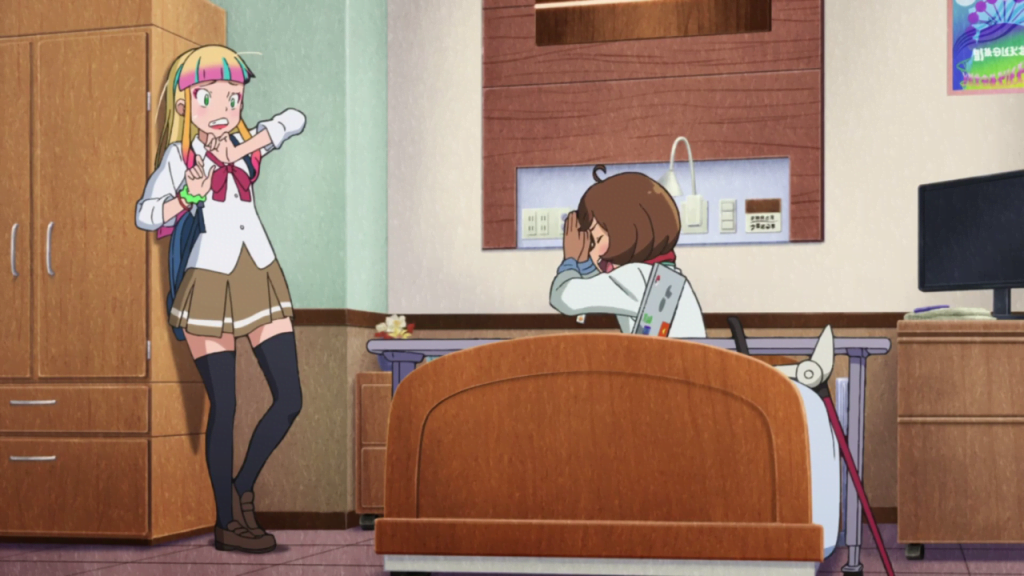
In general, The Power of Us does a great job of putting people at the forefront for really the first time in the series. It’s a recurring idea that people can do amazing things with the help of Pokémon, but here we really see what they’re capable of with their help—keyword being “help,” not “do everything for me.” This common theme also gets turned on its head a little. It’s pushed that Pokémon benefit from people just as much as people benefit from Pokémon. And as people ourselves, if Pokémon were to exist, we would still be the “heroes of our own stories,” so to speak. This subversion on the typical theme really makes the world in The Power of Us feel closer to our own world than any of the movies before.
The Power of Us combines a rather large, lovable cast of characters in a world of Pokémon that feels more like our own than ever before. Nothing ever felt like a waste of time, as each character got their chance to grow and shine, and all scenes added to the characters or setting in an enjoyable, meaningful way. In a unique spin, the movie wasn’t about Pokémon with people as the supporting cast, but rather about people who grow and accomplish great things thanks to Pokémon and each other, with just enough subplot with Zeraora to feel familiarly “Pokémon.” Even series staples Ash and Pikachu helped keep the feeling familiar, but weren’t forced upon the story as heavily as usual, really creating a story about “us” rather than “Ash and some new people he happened upon.”
There’s no doubt in my mind that The Power of Us is my favorite Pokémon movie to date, and I highly recommend giving it a watch if you haven’t already. To follow up the enjoyable I Choose You! with such a fantastic experience, I’m actively looking forward to any future Pokémon movies, a feeling which, despite being a big fan of the franchise overall, I haven’t had for quite a long time.
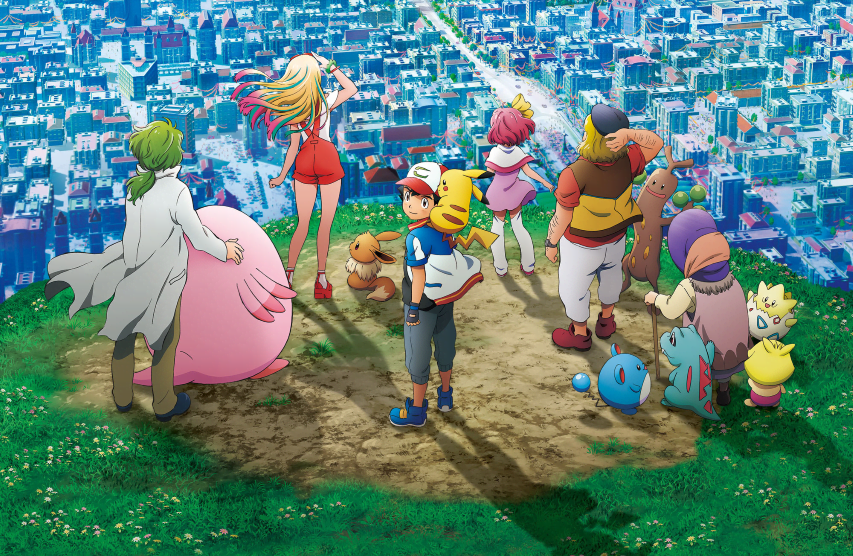
Edited by Jake and bobandbill.
